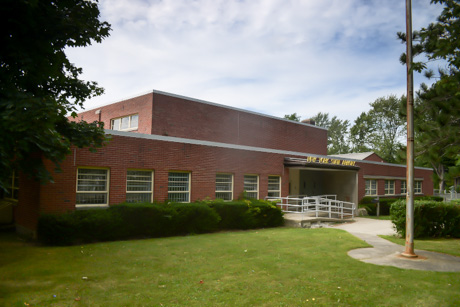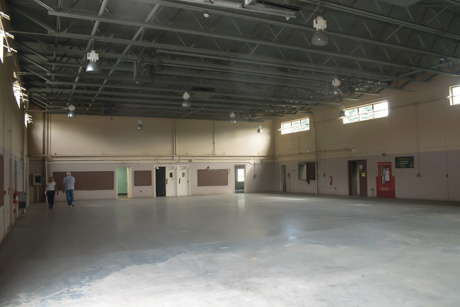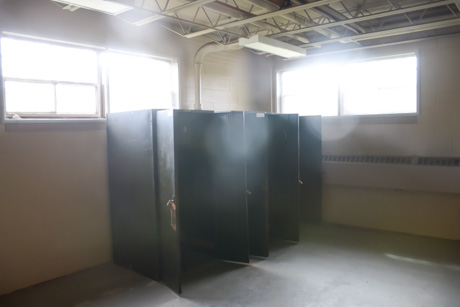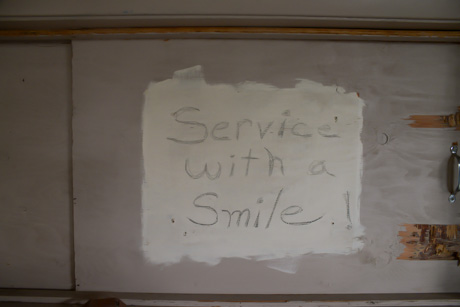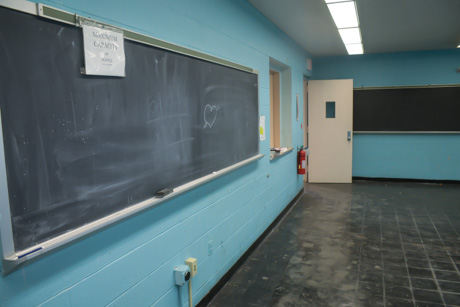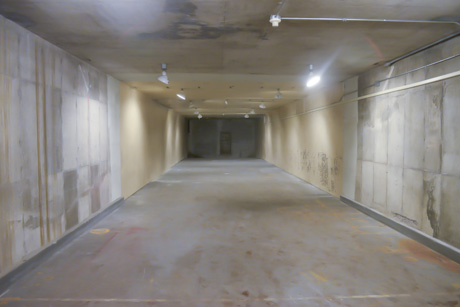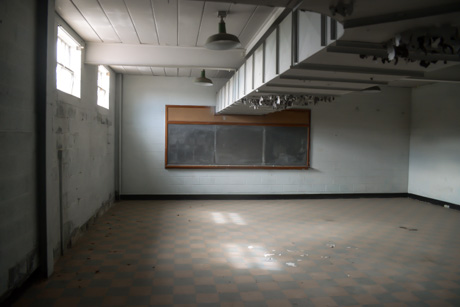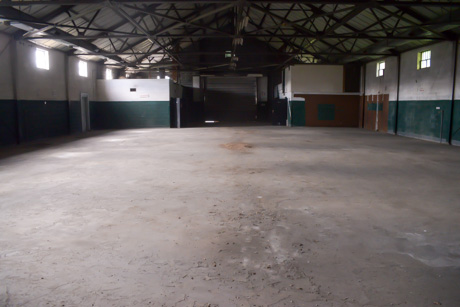Developer unveils RIT architecture students' ideas to repurpose former Batavia Armory
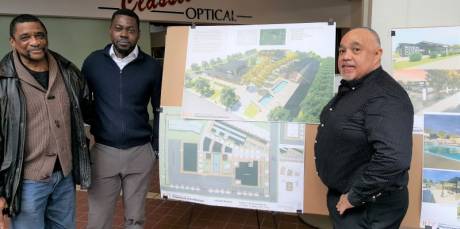
Local contractor Dave Vasciannie is banking on collaboration – including input from the community – as the most effective approach in his quest to convert the former Batavia Armory at 235 State St. into a mixed-use facility anchored by a senior housing complex.
Speaking at an open house on the City Centre concourse on Saturday afternoon, Vasciannie recounted the origins of the project and talked about the enlistment of students in an architectural class at Rochester Institute of Technology to develop potential ideas for the two existing armory buildings.
“What spurred me on was the gentlemen right there with the cane,” he said, pointing to David Carr of Rochester, a neighborhood advocate. “We got introduced on another project in Rochester and, apparently, they had done this before for other projects.”
Vasciannie said Carr met with Nana Andoh, the RIT professor, and since the armory proposal fit into the “adaptive reuse” course description, it was decided to make it a class project.
“They (RIT group) came to Batavia a couple times and they went to work, envisioning their own projects as to what they would do with it,” Vasciannie said. “You’ll notice that all the students but one are from other countries. So, we’re getting that type of perspective built in here.”
Professor Andoh said his eight students are from several countries, including China, Taiwan, India, Saudi Arabia, Tunisia and the United States.
He said they were divided into four teams of two, and charged with creating drawings to show how they would convert the two 12,000-square-foot buildings and reshape the existing green space.
Their ideas, which were presented in an aptly presented series of renderings, included a wellness center, educational facility, farmers’ market/restaurant/community event center, greenhouse/sustainable garden, and youth recreation center (featuring a swimming pool that could be converted to a winter outdoor ice skating rink).
Vasciannie said the students did market studies and surveys “to see what Batavia would support.”
“And that’s important because, as you know, the armory has been sitting there for four years since I bought it,” he said. “We really couldn’t develop it; we we’re concerned about zoning. So instead of working this thing in reverse, let’s find out what the city will support, then we can think about building it.”
Vasciannie, through DeVas Enterprises, LLC, purchased the parcel in August 2016 from the New York State Police for $235,000.
The Batavia resident said the condition of the two buildings, which were built in 1963, is what “enticed” him.
“Those two buildings, you could not build for a fraction today of what it was built for. The structures are sound and what I didn’t want to see was a developer come in and want to tear those down and rebuild. There’s too much stuff there – it’s solid as a rock,” he said.
Carr, who has worked with RIT for four decades on projects in Rochester, said the armory plan serves a dual purpose – “giving students a place to work – this is like their lab – and also giving the investor some ideas of what they can do with their projects.”
He added that community involvement is the key.
“The community has to be involved to make the project successful,” Carr said. “Looking at the next four or five years, we’re talking about another legacy that we’re building here. With the input of the students, the City and Town of Batavia, we can make this work.”
As far as his plan to put up a senior housing complex is concerned, Vasciannie said it comes down to the best road to finding financial support.
“Any type of project is going to take funding, and where funding is basically coming from in New York State is through the housing,” he said. “So, we’re working with another entity called Rochester Property Management, which is looking to bring senior housing into the equation. They are working on their own separate piece and it would surround the existing buildings – and you’ll see from some of these renderings how we’re able to match the two.”
Vasciannie said the next step is to gather the surveys that were available for those who attended the open house and to reach out to a full-time architect. He hopes to start the adaptive reuse project in the fall of this year.
State Street residents Greg and Holly Reinhardt were among those who attended the open house.
The couple noted the students' many “good ideas" and said they are interested in learning more but are concerned about the “possible change” to the neighborhood.
Photo at top: Dave Vasciannie, right, with David Carr, left, and RIT professor Nana Andoh at Saturday's open house concerning the possible future of the former Batavia Armory on State Street.
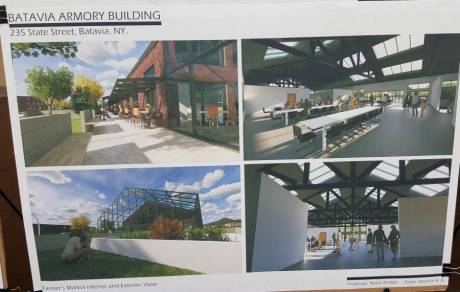
Renderings by students Aneesh Rughwani and J.C. Lee (farmers' market and community event center).
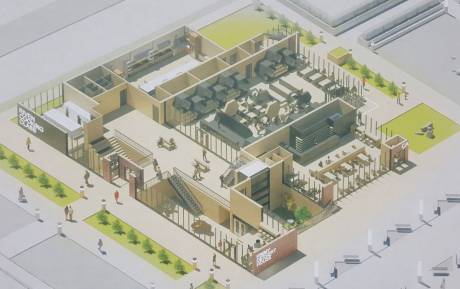
Rendering by students Riven Kim and Wael Mkao (restaurant, greenhouse, farmers' market, cooking class facility).
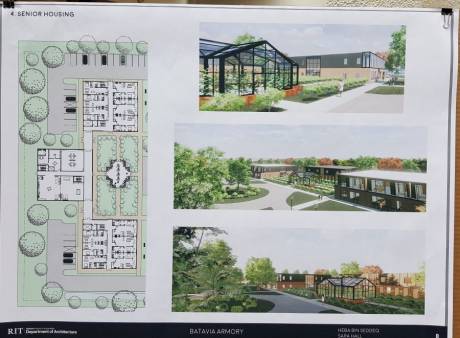
Renderings by students Heba Bin Seddeg and Sara Hall (showing senior housing along with sustainable garden).
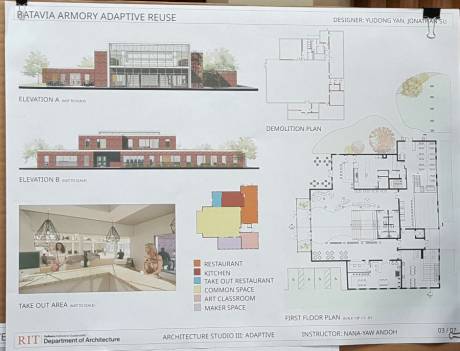
Renderings by students Yudong Yan and Jonathan Su (showing restaurant with take-out area, kitchen, art classroom).
Photos by Mike Pettinella.

